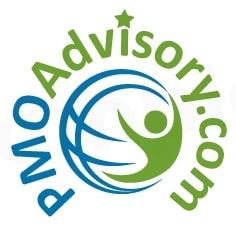Project success rates on large and complex projects tend to be dismal. Studies have shown that organizations successfully implement their strategic initiatives at as low as 10% to as high as 50%. Standish Group, a research and consulting firm, has been publishing a project report since 1995. The latest report in 2015 shows only a 29% success rate. Even if we move this number to an optimistic 50%, the result is still hardly encouraging for project professionals.
There are many cited reasons for project management failures, ranging from poor leadership to mis-management of communication. While these are undoubtedly true, my experience working across industries with opportunities in various roles from being a foot soldier to a project executive reveals something more fundamental and systemic – doing too many things. This leads to poor focus, often wasting valuable resources on low-impact activities, and delivering sub-par performance.
The Standish 2015 report provides strong support to this view. For example, as project size increases, the success rate quickly drops from 62% success for small projects to only 2% for grand projects. To improve, organizations need to adopt a “right-size” project management approach. Perhaps by doing too much, we lose focus on what’s truly important, losing ground on efficiency, and becoming ineffective as a consequence.
What Works
The World Bank publishes an annual flagship report titled “Doing Business in xxxx”, where xxxx is the year. This report, now in its 13th edition compares regulatory practices and their efficiencies across the economies. In the 2016 edition, there are 189 economies. The main metric, Ease of Doing Business, which is a composite from a number of factors such as number of procedures to start a company, is associated with high efficiency and transparent functioning of businesses. United States is ranked number 7, with Singapore (#1), New Zealand (#2), Denmark (#3), Korea Rep (#4), Hong Kong (#5), and United Kingdom (#6) in the lead. Not bad for the world’s largest economy. Do we have something similar in project management for measuring, for example, how many steps or documents required to start projects or report statuses? If the answers are “too many” in your organization, then you are likely facing one or both of these dilemmas:
- Balancing the need for process but also delivering results. I call this the “process vs. solution dilemma”. PMBOK, all 500+ pages, are about processes, across ten knowledge areas and five process groups. But the processes themselves are only enablers to delivering results; processes are essential to efficiency and effectiveness of project operations. But I have seen too many project managers focusing too much on establishing and managing processes than rolling up their sleeves and diving into the problems to solve them. This solution-oriented approach, especially on urgent and mission critical projects, is vital to a successful delivery, as miring too deeply into processes can make project management more bureaucratic than necessary.
- Project manager’s focus. What should be the focus of project managers – on managing all aspects of projects versus concentrating on the most vital few. Naturally, the answer is “it depends” and consider factors such as project uniqueness, process maturity, team composition, regulatory considerations, alignment of key project stakeholders, sponsorship, organization dynamics, vendors / contractors situations, project size and complexity, project management resources, and many more. The key is to analyze the situation and thoughtfully develop a healthy and balanced perspective. If you only have 8 hours in a day (or more like 16 hours for most project managers), what should you focus on?
Four Principles of Right-Size Project Management
From my experience as a project manager, working on projects ranging from the small to grand (over $300 million), as a professor, as a researcher, and as a highly interested party, here are four principles to right size projects:
- Principle of proportionality
- Focusing on the vital few
- Find the best people
- Execute flawlessly
The principle of proportionality is based on the fact that processes are both enablers and impediments and it can be both at the same time depending on perspectives. In addition, as there are limited project management resources, chances are the more time that project managers work on process-related activities, the less time they have solving problems. No process or too much processes would likely result in confusion, inefficiencies, and in some cases conflicts. Most experienced project professionals have experienced situations in which they are forced to “follow the process” when the processes made little sense, both strategically and tactically. The magic is finding the balance. My recommendation for project managers is to conduct a thorough due diligence of the project and determine the following:
- What are the minimum success criteria for this project?
- How important is the project to your client?
- How much resources (e.g. budget, resources, and other scarce resources) is dedicated to this project?
- What are the biggest risks?
- What are the organizational climate and other environmental concerns?
- How disciplined is the project sponsor, project team, and other important stakeholders?
Focusing on the vital few activities is essential especially when resources are finite. Working on too many activities simultaneous often means few or nothing are done well. While the theory is sensible, the practice of prioritizing is much more difficult in practice as what’s high priority for one person may not be equal priority for another. This is where strategy and portfolio governance become crucial for organizations.
When dealing with complex situations, whether it is in a highly competitive environment or when there are just a lot of projects, one of the best ways to mitigate (or exploit) risk is to recruit and nurture the best people. From our experience, managing large projects in multifaceted situations, the single best strategy is to hire the best people that the budget permits. Often, having more resources is not the most crucial, but having highly skilled, intelligent, and reliable professionals are essential.
The first three principles, starting from the macro to the micro, position the organization well on the road to achieve execution excellence. The last principle is all about executing the plan well by being reasonable with the resources and outline, assigning the best people, giving them space to explore but also providing the leadership to set direction, paying attention to details of the vital few but not losing sight of the complementary many, and trusting your strong people to execute but verify along the way.
Right-sizing project management is an approach to execution excellence. It is methodologically agonistic as it brings together “what works” from a variety of practices from traditional waterfall methodology to agile and lean management. It also places a lot of attention on people and organizations. The next time you work a project, ask yourself – is the size of project management processes suitable for your project? If not, then you can put these four principles to work.
I will be presenting as a panel speaker at the upcoming PMI-Keystone Chapter on March, and I am developing a PowerPoint presentation providing more details on these four principles. Please visit our blog in the near future for the presentation.
About the Author:
Prof. Te Wu (PfMP, PgMP, PMP, and PMI-RMP) is a college professor and the CEO of PMO Advisory, a consulting and training firm. The firm is a global PMI Registered Education Provider (R.E.P.) and an aspiring B Corp with a strong social mission. It provides more comprehensive project management certification training (including Portfolio Management – PfMP, Program Management – PgMP, Project Management – PMP & CAPM, Project Risk Management – PMI-RMP, Agile Certified Practitioner – PMI-ACP, PRINCE2, MSP and other professional certifications such as ITIL, COBIT, Marketing and Sales) than any other firm in the metro New York area. It also offers over 20+ free resources. As a professor, his focus is on project management, teaching at leading institutions such as Stevens Institute of Technology, Touro Graduate School of Business, Montclair State University and soon at New York University. Prof. Wu is an avid volunteer with PMI-NYC, PMI-NJ, and PMI-Global, where he is currently serving as a core member of the Portfolio Management Standard Committee, writing the next edition of the Standard for Portfolio Management.
To request his free book (available in February 2016) and other free resources from his company, complete the form at www.pmoadvisory.com/free-resources. The print and Kindle versions are available on Amazon.com.

